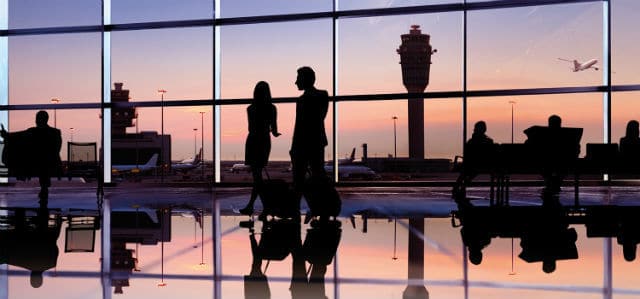Securing an airport’s perimeter. It’s more than you think
Following the Axis Communications article from last week on perimeter breaches at international airports, we continue with considerations that should be made to secure your airport's defences.
What to consider when bolstering your airport’s perimeter defence
It’s never easy to secure an airport’s perimeter, but it’s made even more difficult when officials implement incorrect security protocols and when professionals fail to install the correct perimeter security solutions.
For example, traditional perimeter protection measures—typically analog solutions or ones that used ground and motion sensors, short distance radar and motion sensitive wires—could not always differentiate between an intruder and a non-threatening animal or person, such as a nearby pedestrian walking close by. As you can imagine, there always existed a real possibility these solutions would falsely alert airport security personnel or, at minimum, fail to warn employees about threats in a timely manner. This forced officials to follow “bread crumbs” and piece together disjointed stories well after the fact.
Today, many businesses use network video solutions, which not only provide clean, crisp video footage but are more apt to accurately notify employees when they’re needed.
Here’s what to consider when purchasing network security solutions for airport perimeter protection:
1. It takes a team effort to secure a perimeter:
The Dallas Fort Worth International Airport’s perimeter stretches 20 miles long. The Denver International Airport’s perimeter runs even longer at nearly 29 miles. That’s a lot of border to guard, and it’s difficult to protect these areas if cameras and access controls systems don’t work in unison.
“String all of the U.S. airport perimeters together,” said Brian Jenkins, director of the Mineta Transportation Institute’s National Transportation Safety and Security Center, according to PR Newswire, “and we are approaching the length of the U.S. border with Mexico and security expenditures approaching a billion dollars.”
Unfortunately, many facilities employ solutions that work in isolation, resulting in airport security employees discovering breaches after they’ve happened. It’s imperative to install cameras, solutions and software that work together in harmony.
2. Crime doesn’t sleep:
During early morning or evening, a perimeter is extremely vulnerable to criminals who might use low light as a cloak to secretly breach airports. This can be problematic to security personnel who want or need to identify culprits by the color of their attire. In this case, it’s important to use cameras that use specialized lenses and software so the solutions can detect objects and color in high resolution and in poor lighting.
For airports, these types of systems are particularly useful, especially when simply deterring a criminal with a loud horn isn’t enough. In the age of terrorism, it’s imperative airport security or other regulatory bodies immediately discern who the perpetrator is or, at the very least, identify characteristics so personnel can locate the suspect in short work.
3. Don’t waste money on faulty security solutions:
A 2015 report, Global Airport Security Technology Market Assessment, found that despite the rapid rise in airport security market earnings ($8 billion in 2014) and spending on airport security measures ($69 million in 2012, according to Aviation Pros, citing National Defense Magazine), some airports are struggling to update their perimeter defensebecause of tight budgets.
Airport officials who are operating with little financial wiggle room must install the right perimeter protection solution. In a recent incident, reported the New York Daily News, a man climbed an 8-foot fence at the John F. Kennedy International Airport after his watercraft ran out of fuel and ran across two runways to ask airport employees for assistance. Critics ridiculed JFK airport because its $100 million perimeter protection security system failed to detect the intruder and warn airport security officers in time.
How can airports solve these types of problems? Simple: Install a security solution that provides a higher degree of detection and tracking capabilities in multiple environments and situations.
A recent Associated Press report, according to Fox News, found that since 2012 intruders breach airport perimeters once every 10 days. Simply installing higher fencing isn’t good enough. A person who scales a 9-foot fence will likely have little problem climbing over one that is raised to 10 or even 15 feet. What is needed is a suite of integrated solutions that can protect every inch of a miles-long perimeter no matter the time of day or night, and weather or environmental conditions.
Finally, it’s important to consider installing solutions that employees can use remotely. Personnel who can operate a perimeter defense solution on their phone or laptop while in the breakroom sipping their morning coffee suddenly become just as essential to an airport’s perimeter protection as those who are observing monitors in a control room.
Protecting an airport’s perimeter is difficult. However, by recognizing and understanding its complexities, professionals can stay away from using the wrong solutions and instead opt for comprehensive systems that fit their airport’s specific needs.
Story credit: Axis Communications
Source: https://www.axis.com/blog/secure-insights/securing-airports-perimeter/
This article was originally published by Axis Communications, Principal Exhibition and Registration Sponsor for the Security Exhibition & Conference.
-
Stay up to date with the latest news and Security updates.
- Subscribe

